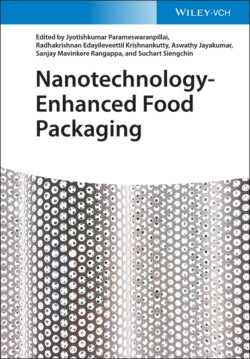Читать книгу Nanotechnology-Enhanced Food Packaging - Группа авторов - Страница 17
1.4.1 Usages of Nanosensors in Pathogen and Adulterant Detection in the Food Industry
ОглавлениеNanomaterials for use in the development of biosensors include high responsiveness and other modern features. In dietary microbiology, nanosensors or nanobiosensors are used to detect pathogens in processing plants and foodstuffs, to measure accessible foodstuffs, and to alert customers and suppliers to food health. The nanosensor serves as an indicator of changes in environmental conditions, such as humidity or storage temperature, microbial contamination, or product degradation. To achieve potential biosensor applications, former researchers have studied specific nanostructures such as thin films, nanoparticles, nanorods, and nanofibers. These thin, film-based optical immunosensors have contributed to efficient and highly responsive detection systems for microbial or cell detection. These immunosensors are used to immobilize specific anticorps, antigens, or protein molecules on thin nanofilms or sensor chips that transmit signals for the detection of target molecules. Dimethyl siloxane combined with carbohydrate biosensors has been very carefully identified and used for microorganisms, contaminants, and other food and beverage-related items due to their quick identification, usability and cost-effectiveness. The contaminants connected to such nanotubes induce observable shifts of conductivity of waterborne contaminants in the identification of waterborne toxins. Therefore, the use of an electronic nose or tongue consisting of several nanosensors tracks food by communicating scents of foodstuffs or gas signals [28–30].
Adulteration is one of the key challenges faced in the food sector. Nanosensors have better sensitivity and accuracy than other sensors, for example, gold nanoparticles functionalized with cyanuric acid groups selectively bind to melamine, a common adulterant used to inflate the protein content in pet foods and infant formulas. Similarly, melamine adulteration in raw milk can also be detected up to 2.5 ppb using nanosensors.
